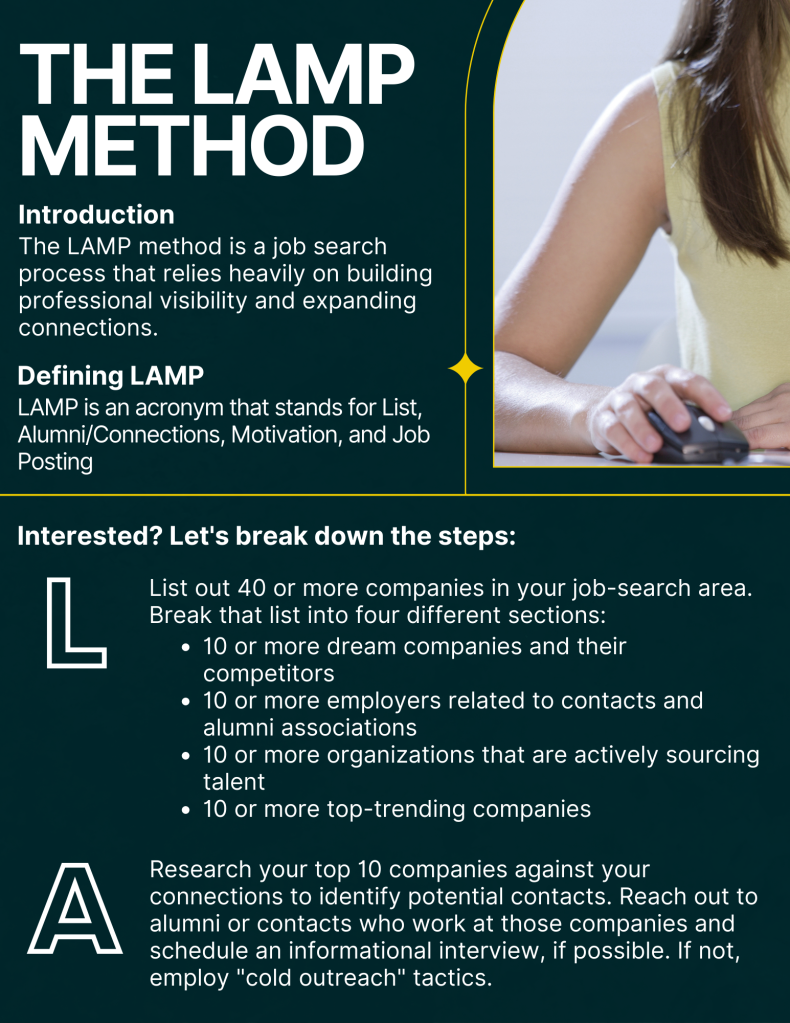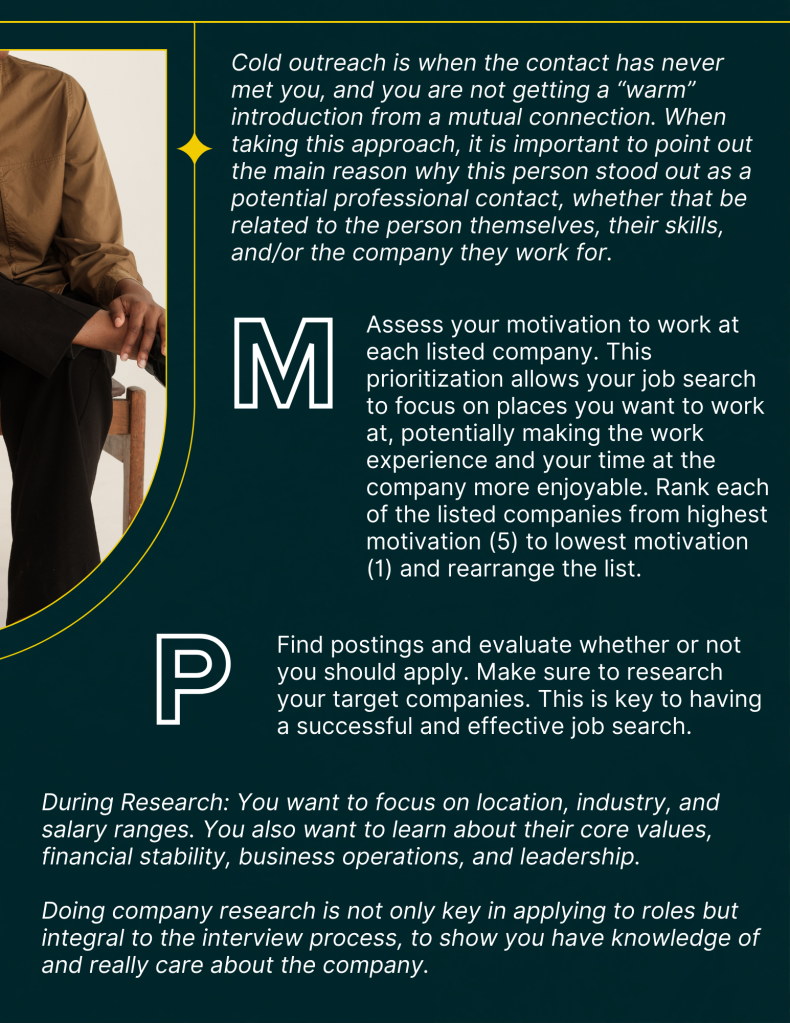Without an effective approach and active network, the job search can feel dismal. This is why we strongly encourage job seekers and career explorers to keep the right tools and resources handy.
Along with the proactive approach, there are a few other job search strategies that will help you shine in your career quest. Enter: the LAMP method.
The current landscape for job seekers is heavily populated, with hundreds of applicants often competing for the same position. Through the implementation of LAMP, job seekers of all stages will be well on their way to career enlightenment. Some fundamental steps include: listing out potential employers, evaluating them based on wants and needs, surveying contacts for potential ins, and elevating networks through cold outreach tactics and informational interviews.
Below, we‘ll walk you through the LAMP method and prepare you to use it in your job search. For more information on outreach, visit our Networking guide.


The LAMP method
Introduction
The LAMP method is a job search process that relies heavily on building professional visibility and expanding connections.
Defining LAMP
LAMP is an acronym that stands for List, Alumni/Connections, Motivation, and Job Posting
Interested? Let’s break down the steps:
L — List out 40 or more companies in your job-search area. Break that list into four different sections:
- 10 or more dream companies and their competitors
- 10 or more employers related to contacts and alumni associations
- 10 or more organizations that are actively sourcing talent
- 10 or more top-trending companies
A — Research your top 10 companies against your connections to identify potential contacts. Reach out to alumni or contacts who work at those companies and schedule an informational interview, if possible. If not, employ “cold outreach” tactics.
Cold outreach is when the contact has never met you, and you are not getting a “warm” introduction from a mutual connection. When taking this approach, it is important to point out the main reason why this person stood out as a potential professional contact, whether that be related to the person themselves, their skills, and/or the company they work for.
M — Assess your motivation to work at each listed company. This prioritization allows your job search to focus on places you want to work at, potentially making the work experience and your time at the company more enjoyable. Rank each of the listed companies from highest motivation (5) to lowest motivation (1) and rearrange the list.
P — Find postings and evaluate whether or not you should apply. Make sure to research your target companies. This is key to having a successful and effective job search.
During Research: You want to focus on location, industry, and salary ranges. You also want to learn about their core values, financial stability, business operations, and leadership.
Doing company research is not only key in applying to roles but integral to the interview process, to show you have knowledge of and really care about the company.




